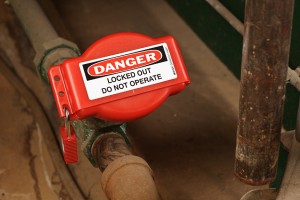Key Lockout Tagout Definitions Every Safety Manager Should Know

The power of heavy duty machinery is largely left up to speculation until a major accident occurs and its true impact is shown. Protecting workers from the powerful machines they interact with on a daily basis largely relies on the presence of an effective and compliant lockout tagout program and the proper training of all employees who will have to apply its procedures. When creating a sustainable program here is a list of 10 lockout terms, all safety managers, and workers should know.
- Authorized Employee: the worker that is applying the lock or tag to machines/equipment in order to perform service on it
- Affected Employee: A worker that may come in contact with machines or equipment on which lockout tagout procedures are applied
- Other Employees: All worker who are in or around the area in which lockout tagout procedures are being used
- Capable of being locked out: Can be locked without dismantling, rebuilding, or replacing the energy-isolating device or permanently altering its energy control capability.
- Energized: any piece of equipment or machinery that is connected to an energy source or may contain stored energy
- Energy-isolating device: A device that physically prevents the transmission or release of energy
- Energy source: Any source of electrical, mechanical, hydraulic, pneumatic, chemical, thermal, or other energy.
- Lockout: The placement of a device often in the form of some sort of lock, on an energy-isolating device, in accordance with an established procedure, ensuring that the piece of equipment the device in being place on is controlled and cannot be operated until the lockout device is removed.
- Servicing and/or maintenance: Workplace activities that place workers in situations where they would be exposed to unexpected startups or releases of hazardous energy from the piece of equipment on which they are working or in the presence of.
- Tagout: The placement of a tagout device on an energy-isolating device, in accordance with an established procedure, to indicate that the piece of equipment is being controlled may not be operated until the tagout device is removed.
